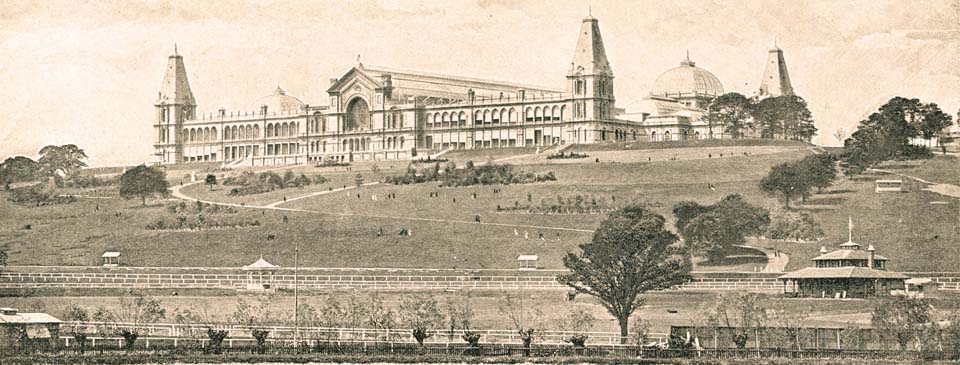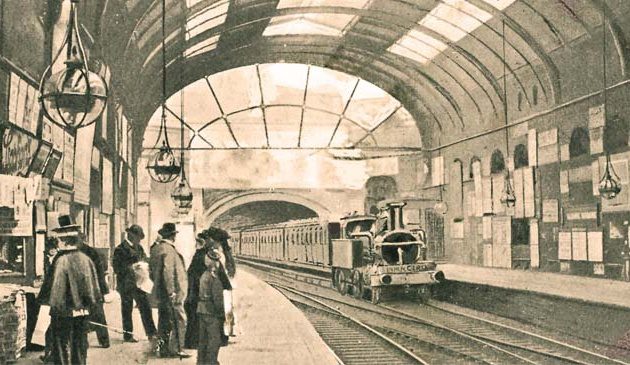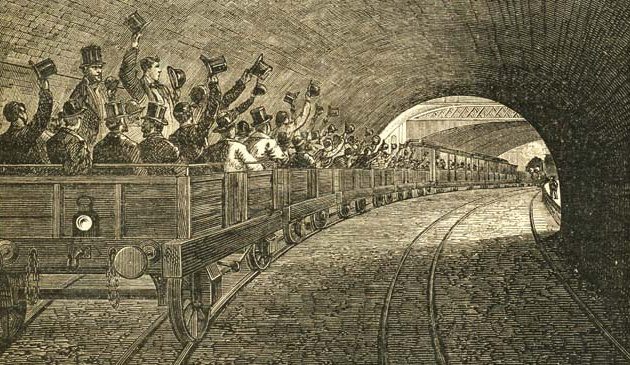Alexandra Palace and Park

Alexandra Palace opened to the public in May 1873 but was destroyed by fire just 14 days later. It was rebuilt in the following two years. In this picture we see the building and surrounding park as it was in the late 19th century and before the addition of its famous television mast.
The imposing Alexandra Palace, with its surrounding park, sitting high on a hill in North London, has been a major leisure attraction since Victorian times. It was there that the world’s first regular television broadcasts were made in the 1930s. Unlike its rival, the Crystal Palace, the building is a great survivor, having been gutted by fire on two separate occasions.
Tottenham Wood, between the villages of Muswell Hill, Wood Green and Hornsey on the western edge of the parish of Tottenham, had mostly been cleared during the 18th century and used as pasture. In 1789 its owner, Lord of the Manor the Earl of Coleraine, put the land up for auction. It was acquired by a tobacconist from London who built a large house, which survived as the clubhouse of the Muswell Hill golf club until 1932. In 1812 the land was acquired by Thomas Rhodes, a great-uncle of the British imperialist Cecil Rhodes, and he further cultivated Tottenham Wood Farm. When the Great Northern Railway from King’s Cross was created to the east in 1850 he purchased the section of the adjoining Nightingale Hall estate between the railway and his land, extending the farm to 450 acres.
That part of Middlesex was still largely unpopulated in the mid-19th century and mainly used for dairy farming and hayfields. Rhodes died in 1856. His heirs possibly had plans to use the land to create a residential estate because they paid the Great Northern £4,000 towards the opening of a new station on the line, which opened in 1859, then called Wood Green.
When the hugely successful Great Exhibition at Hyde Park ended in 1851 its vast glass and metal building, which became known as the ‘Crystal Palace’, was moved to Sydenham Hill in South-East London. There it was rebuilt as the centre-piece of a new commercial pleasure park, described by the company as “refined recreation, calculated to elevate the intellect, [and] instruct the mind”. Fifteen million people visited during the first decade. Its success spurred a plan for a similar venue in North London.
One of the architects working on the Crystal Palace at Hyde Park, and on its subsequent move to Sydenham between 1852-54, was Owen Jones. In December 1858 he exhibited drawings at Vestry Hall, Piccadilly for a ‘Palace of the People, Muswell Hill’, a similar building and concept to Crystal Palace. The proposed building was to sit above a railway station, allowing direct access for passengers. Presumably by then Jones had had negotiations with the Rhodes family. The Great Northern Palace Company was formed but sufficient finance was not forthcoming and the venture failed to proceed. (Owen Jones later made his name as a pioneer in Britain of Islamic designs and abstract patterns and was the author of the influential 1856 book Grammar of Ornament).
Despite its failure to attract finance, Jones’s basic idea for a People’s Palace at Muswell Hill was to continue. In March 1863 Edward, Prince of Wales (son of Queen Victoria, and the future Edward VII) married Alexandra of Denmark. The Alexandra Palace Company was formed, named in honour of the new princess, and it acquired Tottenham Wood Farm. At the same time the adjoining ten-acre Grove estate, once occupied by Topham Beauclerk, great-grandson of Charles II and Nell Gwynne and friend of Dr. Samuel Johnson, was purchased, which provided access to a main road. The company launched the venture with a fete at Tottenham Wood in July 1863.
The Royal Society of Arts, Manufactures & Trade held a major world fair at South Kensington in 1862, on the site now occupied by the Natural History Museum, to showcase advances in technology. The large building erected for the event occupied 21 acres and after its closure the Alexandra Park Company purchased for £100,000 the transportable materials. They were used to create a new building, designed by Alfred Meeson and John Johnson, in a very different style to Jones’s previous ideas. In its centre was a portico entrance and dome that had previously been features of the South Kensington exhibition.
Work on the building commenced in September 1866 and 12,000 men were employed on the project. Difficulties were encountered during the construction, however. The peak of the hill was found to be unstable due to its composition of gravel and clay, and subject to severe icing during the cold months. Confronted with these problems the company went bankrupt and the building remained half-completed for several years. In 1866 the Muswell Hill Estate Company was formed to take over the land. At the same time the Alexandra Palace Company, was created, agreeing a 999-year lease with the MHEC for space to finish the building. The creation of the former was the first formal naming of Alexandra Palace. (In the 1870s the APC purchased the freehold of the entire estate from the MHEC). In 1868 a racecourse of a mile in length, and extensive stabling, was opened at the foot of the hill, providing a useful income. The first horse-race took place in 1868.


